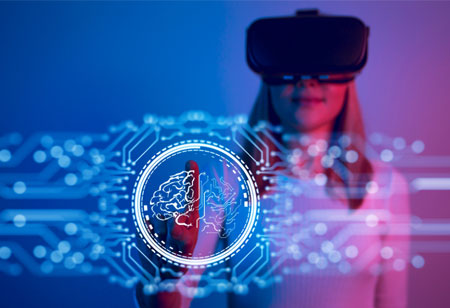THANK YOU FOR SUBSCRIBING
The 3 Sectors which Stand to Benefit from the Consolidation of AR, VR, and Robotics
A cyber-physical model of the robotic unit will enable users to interact with a virtual version of the robot and its environment.

By
Apac CIOOutlook | Tuesday, August 06, 2019
Stay ahead of the industry with exclusive feature stories on the top companies, expert insights and the latest news delivered straight to your inbox. Subscribe today.
The integration of emerging technologies such as robotics, VR, and AR are opening new opportunities for organizations.
FREMONT, CA – The emergence of augmented reality (AR), virtual reality (VR), and robotics are enabling organizations across various sectors to innovate and enhance their workflows with new capabilities. Robotics sector has revolutionized manufacturing and packaging, empowering industries to achieve greater efficiency and operational safety. The use cases of AR and VR technologies are plenty in gaming and media, as well as in employee training programs. Organizations across various sectors, including manufacturing, healthcare, and private research, are seeking to integrate all three technologies.
Automation
VR can be leveraged in the development of robots equipped by multiple sensor units, wherein it replicates the movements of the user. The integration will allow the robots to be controlled remotely, especially in hazardous areas. A cyber-physical model of the robotic unit will enable users to interact with a virtual version of the robot and its environment. The internal systems of VR-enabled robots are based on the homunculus model of the human brain, which is designed to control its movement, identify images, and perceive different situations. The VR control systems will enable the users to remotely pick, move, and retrieve objects using the robot systems.
Healthcare
Robotics is widely used in the healthcare sector to assist surgical processes. The incorporation of AR and VR has led to the evolutions of healthcare robots. The units leverage artificial intelligence (AI) to analyze the data supplied by the sensors. The VR/AR-based surgical solutions are also utilized for training students by simulating surgeries on virtual patients with various medical conditions. Also, AR-based exoskeletons can be leveraged to assist the disabled in standing, moving, and sitting.
Check out: Top Augmented and Virtual Reality Companies
Defense
VR technology is widely used in military training, especially for the handling of military robots and drones. Virtual battlefields are used to simulate various battle conditions, where soldiers can be trained in a range of battlefield tactics. The AR technology can be used for the remote control of drones, enabling soldiers to guide the units seamlessly through the battlefield. Robotics and VR technology is also used to design advanced training programs for police departments.
Robotics, AR, and VR offer great potential across various sectors, and it will not take long for mainstream businesses to leverage the benefits of their integration. It will not only open new opportunities in the field of human-machine interactions but will also introduce precision and efficiency into the business approaches.





